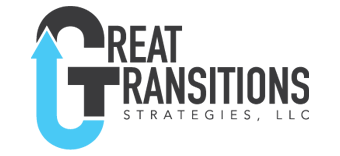“When I told my friends at happy hour today, I was promoting a super performer to lead a team of 8 developers, Julie asked; what makes her ready for the leadership role other than she has been a great developer?”
Reflexively I answered; “She knows the work inside and out.” Then Julie said “That’s great but does she know how to lead? I am suffering under a leader who was great producer on the team but, not prepared to lead.”
I have been thinking about that exchange ever since.
What changes when we are promoted or we promote an individual from a position on the team to leading the team?
Here is an approach to ensure you are ready for the next promotion and those you promote are ready.
I believe every position in an organization has a requirement for the knowledge, skills, and abilities in the 5 broad areas summarized below. This will be our guide to evaluate the required competencies required at different leadership levels.
- Leadership – the ability to create a vision and lead a team to accomplish the vision
- Technical Expertise – the specific technical knowledge required for a position such as; finance, engineering, programing, marketing, etc.
- Tactical Expertise – the application of technical expertise in the business context. Such as using accounting to analyze business performance or developing a computer application to meet a client’s needs.
- Business Knowledge – understanding the fundamentals of the business and industry. Such as the business cycle, raising capital, cash flows, seasonal trends, hiring nuances, and supply chain.
- Cultural Expertise – The ability to assimilate into a culture as well as creating and maintaining one
The Promotion to Team Leader
Ever have an experience like Julie, by a leader who lacks the skills for the position?
Often promotions are awarded based on outstanding performance as a team member. The person is a great technical producer. Which, does not automatically translate into good team leader. What are the skills required to be successful in this first leadership transition?
Typically, when transitioned to lead at this level, you still are part of the team with responsibility for some production with your teammates. The change: your performance is evaluated by the performance of the team.
If you are developing yourself or others for this level, what should you focus on in each of the 5 areas?
Leadership:
The most important area of development is time management. The team leader’s ability to prioritize time dedicated to leadership rather than individual production. Leading in now more important than individual production.
The other top skills to be mastered are: work assignment, motivating the team, supervising, delegation, evaluation, and holding team members accountable.
Technical Expertise
The level of expertise has not changed for the technical work.
Tactical Expertise
The application of leadership expertise is now the top priority rather than the application of technical expertise in the workplace. One must learn how to apply leadership skills in their environment.
Business Acumen
Little has changed in this area.
Cultural Expertise
Rather than simply assimilating into a team, the leader is responsible for developing and maintaining the culture. Key skills are: building and sustaining morale, building relationships, establishing and maintaining team norms, and being able to read the team.
For leaders the leap from team member to team leader is 1) understanding their work is ensuring the successful work of others and 2) prioritizing the leadership work over their individual technical work.
Think about team leaders in your organization. How well prepared are they for this first leadership transition? What would be the impact if you used the above model to develop team leaders?
At Great Transitions Strategies we work with organizations and individuals to ensure leaders are prepared to succeed at the next level. Contact us for a conversation to explore how help develop leaders.



